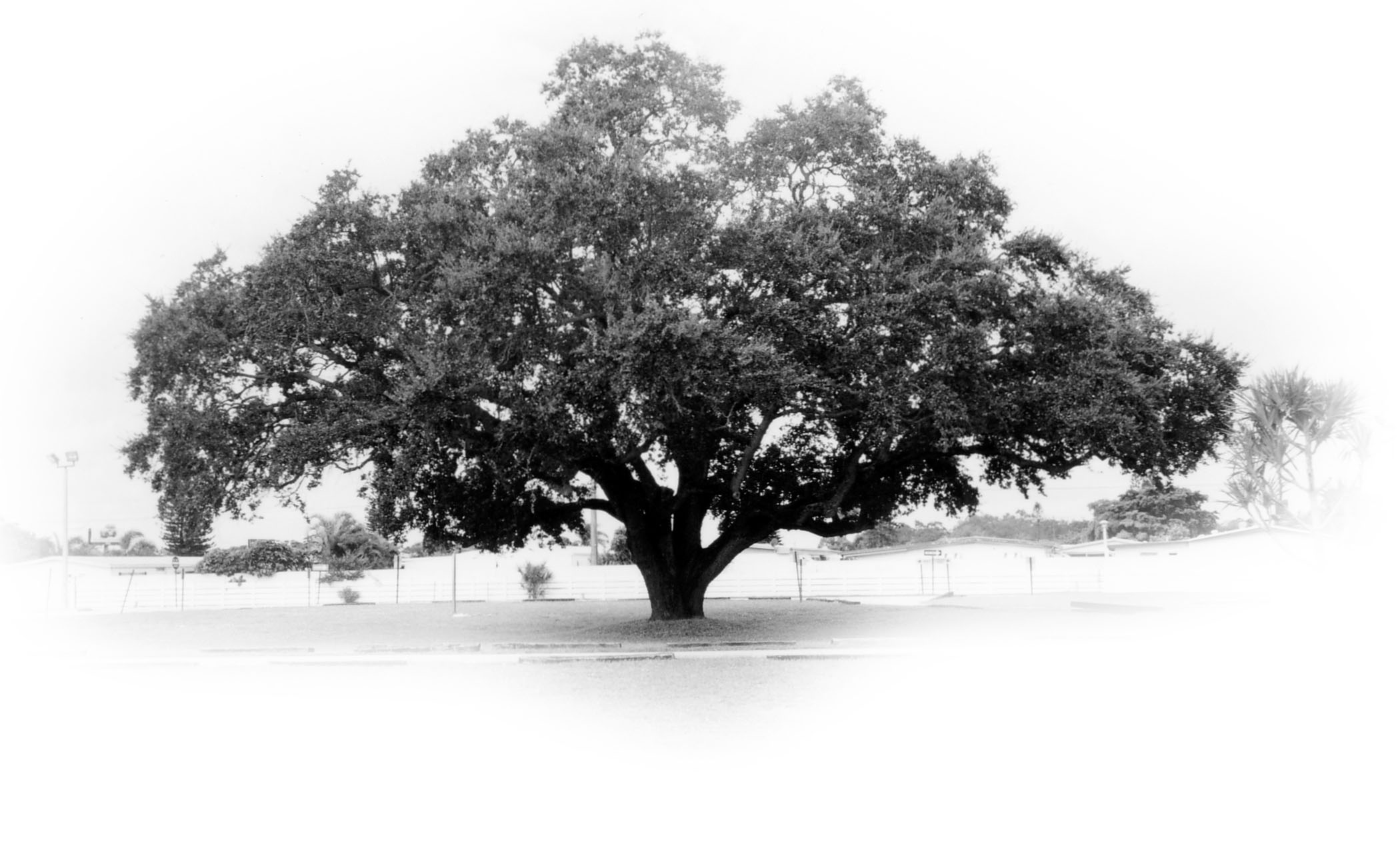28 Unique Objects from the Ah-Tah-Thi-Ki Museum: Part 1
August 21st marked the 28th Anniversary of the Ah-Tah-Thi-Ki Museum! Officially, the Museum opened its doors on August 21st, 1997. This date also marked the 40th anniversary of federal recognition for the Seminole Tribe of Florida. Last year to mark the anniversary, we looked at 27 Memorable Moments from the Museum. We explored some incredibly moving and important points in the Museum’s history, from its opening day to special exhibits. You can find Part 1 and Part 2 here. This year, we are celebrating the Museum by spotlighting 28 Unique Objects from the Museum Collection. Over the past 28 years, the Museum, as well as community members, have worked diligently to preserve, protect, and share the Seminole story. This is reflected in the Collection.
Our selections for these two posts only showcase a sliver of the Collection, which boasts over 200,000 historic objects and paintings. The Museum’s diverse collection offers a window into the history and culture of the Seminole Tribe of Florida, as well as the broader Native American populations of the Southeastern United States. Among the many items are 20th-century artifacts that reflect the daily lives, artistry, and resilience of these communities. Visitors can explore everything from historical newspapers and personal manuscripts to intricately crafted patchwork clothing, handwoven baskets, traditional dolls, military memorabilia, and a wide range of ephemera. We encourage you to explore the Museum’s Online Collection, where you can peruse many of these objects digitally.
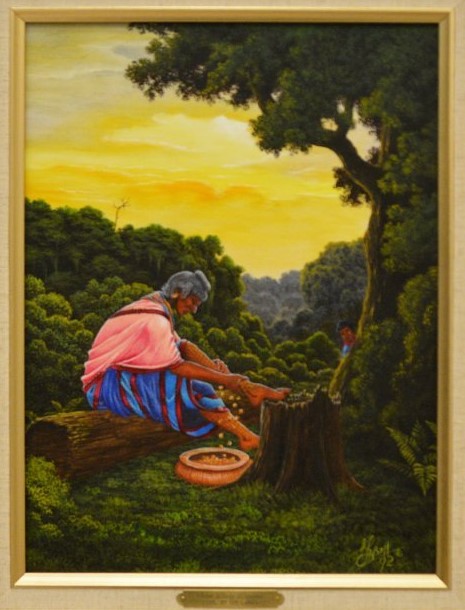
1992.8.1, ATTK Museum
Oil Painting by Guy LaBree
This painting, by Guy LaBree shows a Seminole woman rubbing corn on her legs, while a young boy watches from behind a tree. This painting in particular is notable because it was part of a series by LaBree which depicted various Seminole legends and stories. These paintings were used to illustrate the book Legends of the Seminoles by Betty Mae Jumper. The book pairs each legend with Betty Mae’s own explanation of the tale, while LaBree’s paintings visually bring them to life. You can learn more about this book, and Seminole legends, in a previous blog post.

Wooden Seminole Doll
Seminole dolls are an incredibly recognizable part of Seminole culture and history. They boomed into popularity along with the Seminole tourist trade, and palmetto fiber dolls became popular souvenirs for tourists to bring home. The Ah-Tah-Thi-Ki Museum cares for dozens of Seminole dolls from various eras. What makes this doll special is that it is made from wood. Very early, pre-tourism, dolls were made from cloth and wood, like this one. They were primarily made as children’s toys, and not for sale. This doll in particular was most likely a transitional doll, as she is decorated with rows of necklaces and simple patterns in her dress. You can learn more about Seminole dolls in a previous blog post!
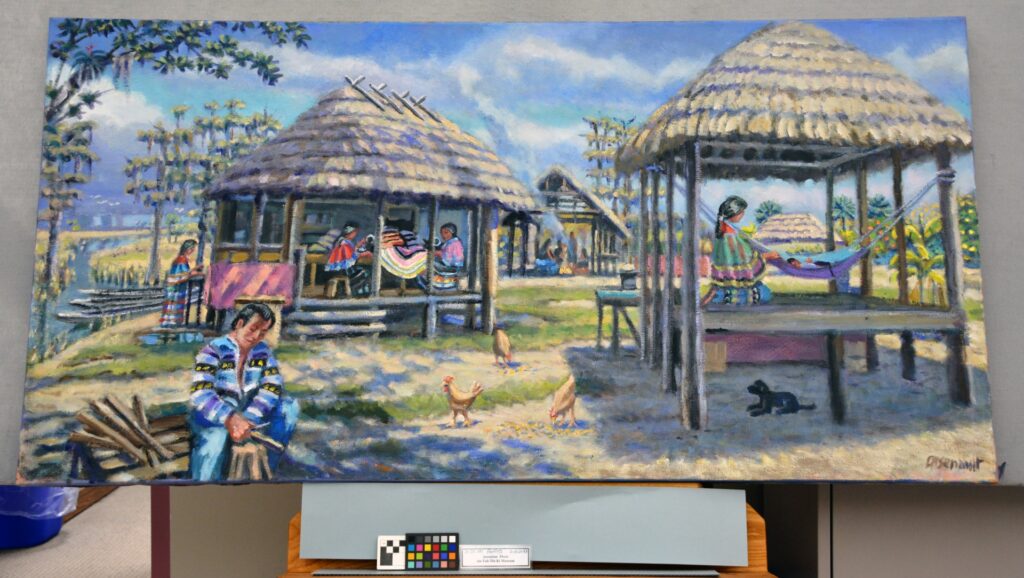
2023.27.1, ATTK Museum
“Miccosukee Village on Tamiami Trail” by Paul Arsenault
A more recent addition to the Museum Collection, this painting by Paul Arsenault was acquired in 2023. It depicts a village at Fakahatchee, the home of Cory and Juanita Osceola. They are the grandparents of Tina Osceola, who is shown in the painting as a young girl. She is shown wearing a red cape and is sewing patchwork along with her aunt Tahama Osceola. Arsenault painted the scene after a visit to the village in the 1980s. But he continued to make additions and changes to it in the following years. He has been an artist in the Naples area for decades and is active in the art community.
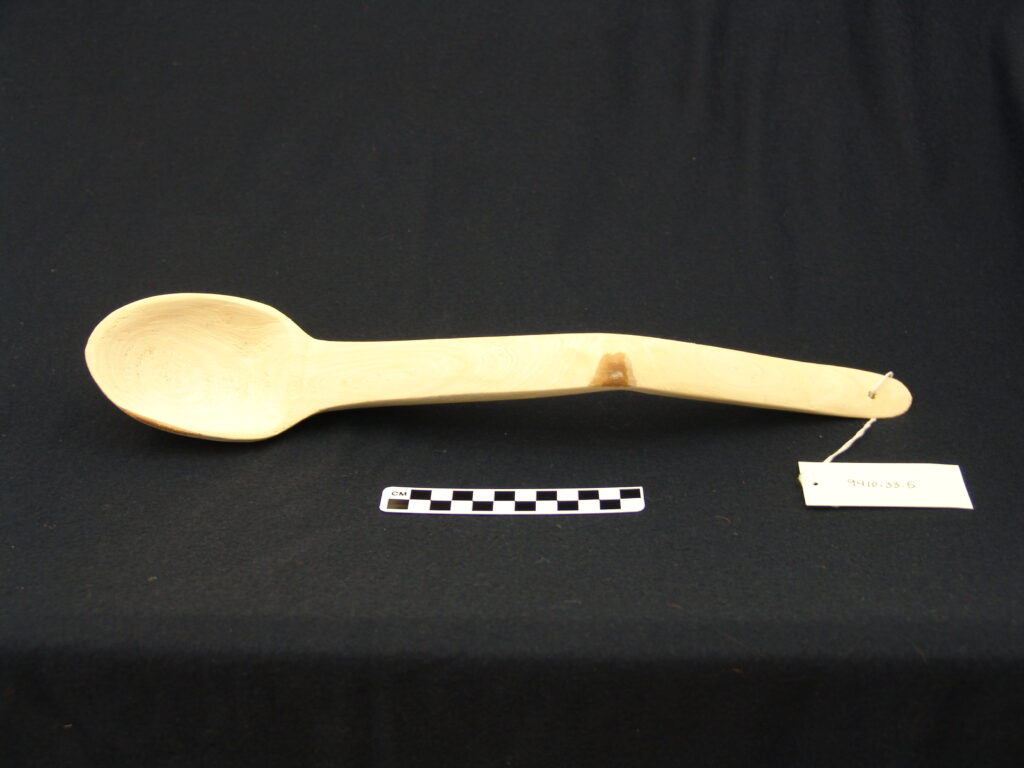
1994.28.5, ATTK Museum Collection
Cypress Sofkee Spoon
Made from a single piece of cypress wood and sanded smooth, this special sofkee spoon is a little over 18 inches long. Frank J. Billie carved and sanded it, with a slight bend in the center of the handle. Sofkee, a traditional Seminole food, can be made from corn or rice (or, in the past, coontie flour). It is a warm stewed porridge drink that is still popular today. Often, it can be flavored with fruit or other spices. Some common additions are pumpkin and guava, although plain sofkee is still a common choice. In a traditional camp setting a pot of coffee or sofkee would be kept boiling over the central fire. It could be consumed when needed or offered to a guest who was visiting. Spoons like these would be used as ladles. Sofkee is very hearty and could keep you full for a long time.
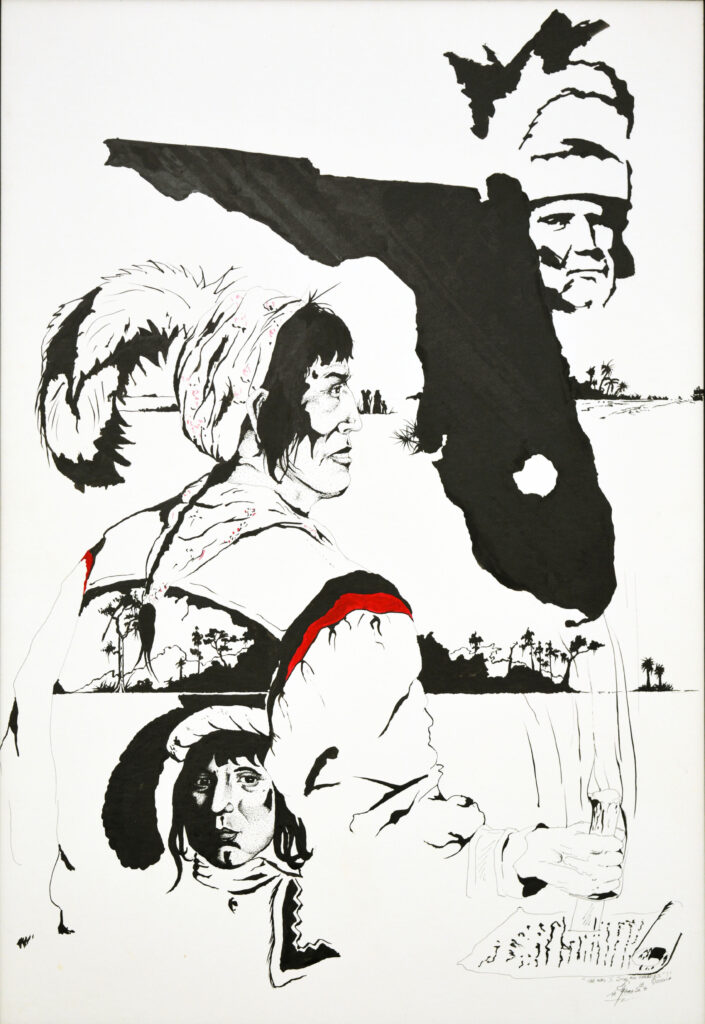
Thomas Storm Sr.’s “The Way I Sign All Treaties”
Created in 1991, this painting by Thomas Storm Sr. shows Osceola stabbing a treaty. There are also the heads of two other Seminoles, the silhouette of the state of Florida, and the silhouette of what looks to be tree islands in the background. It is predominantly black and white, with some red accents on Osceola’s shirt. This painting, like other modern paintings depicting Osceola that are in the collection, shows the legacy of resilience and resistance left by Osceola and other leaders.
Storm, who was a prolific artist, often created scenes that showed the “Seminole Tribe’s fight to survive under the wrath of the U.S. government.” In 2013, Storm’s work was showcased in the Mosaic Gallery at the Ah-Tah-Thi-Ki Museum. He shared that “We are not a defeated people. By far we have never been rich either – with money, that is. We are people of the earth. Our riches are the woods where we built homes and fished for food.”
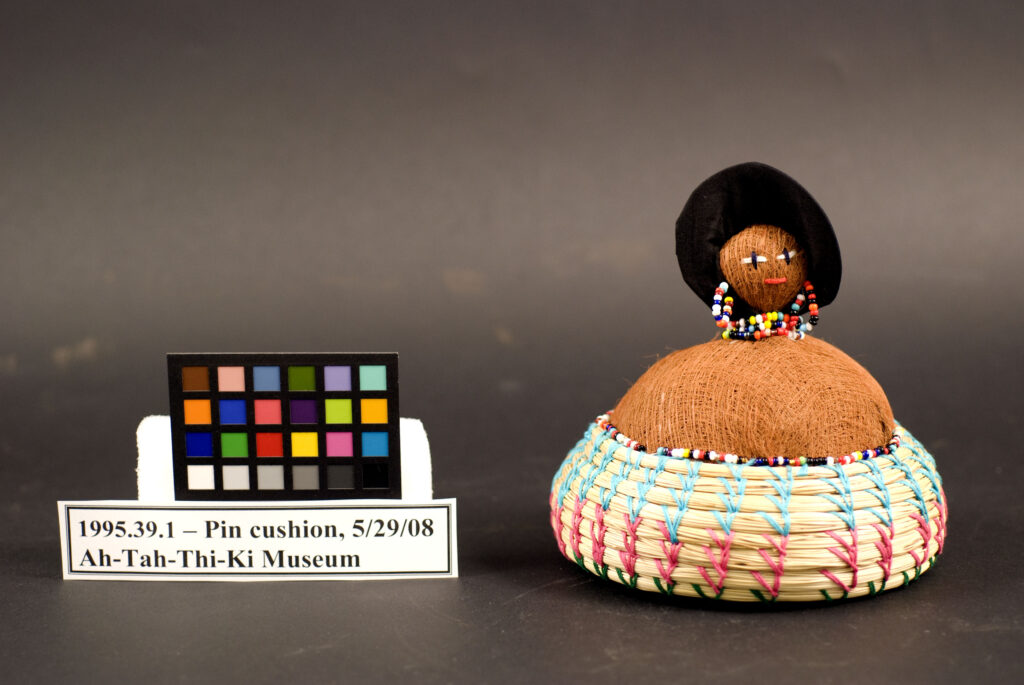
Seminole Sweetgrass and Palmetto Fiber Doll Head Pincushion
Occasionally, especially in modern times, Seminole artisans will mix traditional crafts. This incredibly unique object is one of those melds of multiple crafting techniques. This pincushion is made from both sweetgrass and palmetto fiber and features a woven sweetgrass basket-like base. Multicolored thread stitches the base together. The pincushion is created from palmetto fiber, much like the base of a basket would be. But the most striking part of this pincushion is the doll head affixed to the top. The palmetto fiber head is decorated with tiny beaded jewelry, Black fabric is wrapped around the head with a brim, to mimic a traditional Seminole hairstyle. Small stitches of cotton embroidery floss were used to give the face features.
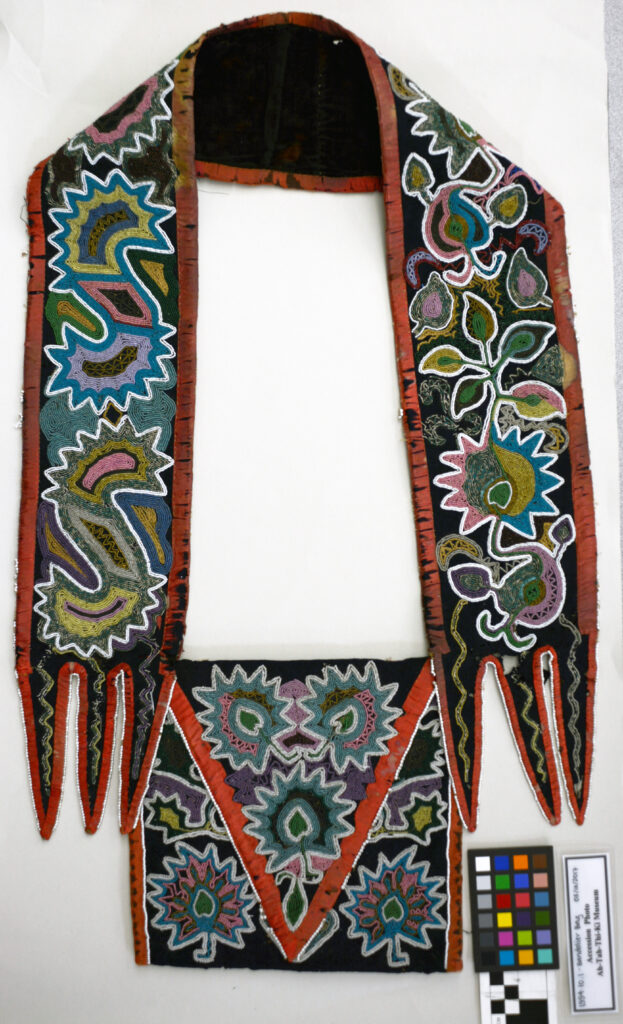
Southeastern Bandolier Bag
During the 18th and 19th centuries beaded bandolier bags and sashes were typical menswear for Seminoles and other Indigenous tribes of the southeast. Another famous beaded object in the Museum Collection is the recently acquired sash of Chief Osceola. This beaded bandolier bag is from the early 19th century. It is made of dark blue wool, red silk trim, glass beads and metal beads. The bag is lined with a glazed khaki fabric, and the strap is lined with a deep brown velvet.
Although complex beaded bags and sashes became increasingly scarce in the 20th century, determined artists have begun trying to revive this tradition.

Seminole Totem Pole
Around the 1920s, totem poles carved from cypress wood started to make their way into Seminole tourist camps. Large, painted totem poles would decorate the exterior of the camps (such as Musa Isle) and smaller, model ones would be sold as souvenirs. Although totem poles are not historically a Seminole tradition, they have become a shared tradition now contemporarily. You can learn more about Seminole totem poles, and how they came to be, in a previous blog post. Above, you can see one of the two totem poles that the Ah-Tah-Thi-Ki Museum cares for in its collection. Bobby Henry carved it for the first pow-wow held at the Coo-Taun Cho-Bee Village in Tampa. The pole then was displayed at the Village for a time. It is unpainted, with both human and owl figures.
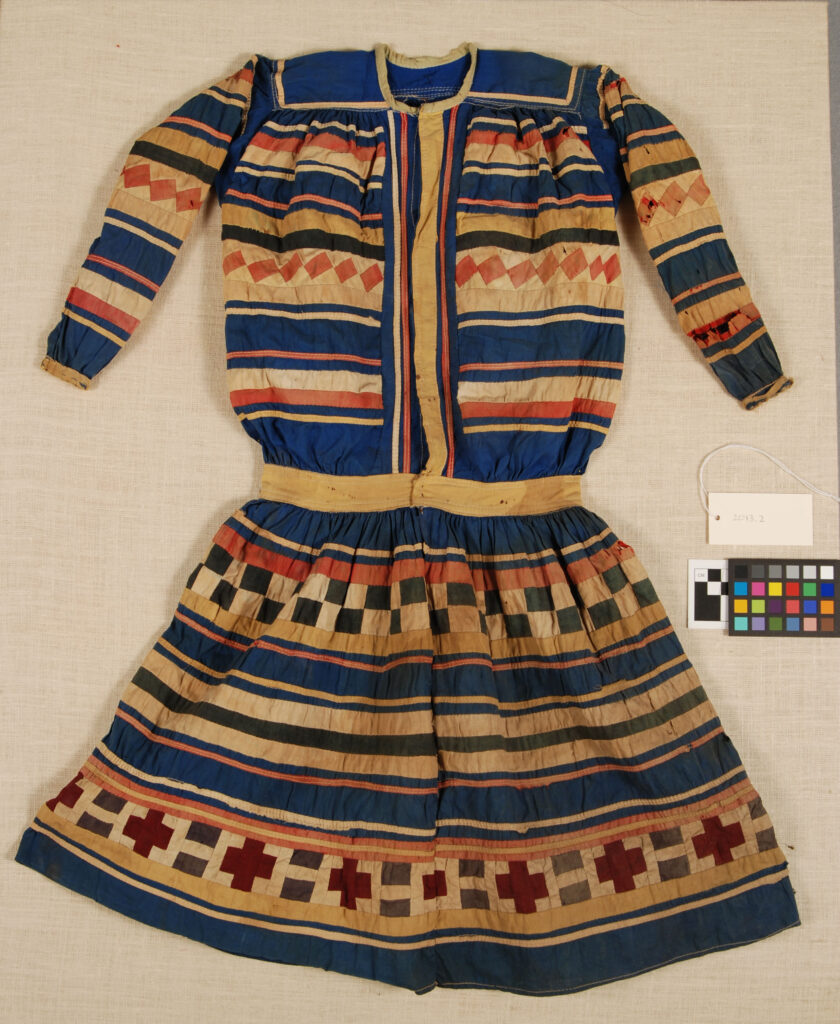
Boy’s Bigshirt
Patchwork is one of the most iconic of all Seminole crafts. During the late 1800s, the popularization of personal sewing machines had an incredible impact on Seminole patchwork. Around the same time, the end of the trading post era would signal a shift for Seminoles towards tourism. With these sewing machines, the development of patchwork in Seminole fashion would flourish, boosted by the tourist trade. Initially, patchwork was simple with only a few colors. As the craft developed, artists would create complex geometric patterns by cutting, rotating, flipping, and mirroring long bands of sewn fabric strips. This 20th century boys’ bigshirt features three rows of patchwork. The main color is blue, with black, yellow, and red patterning. The colors are faded, showing heavy use.
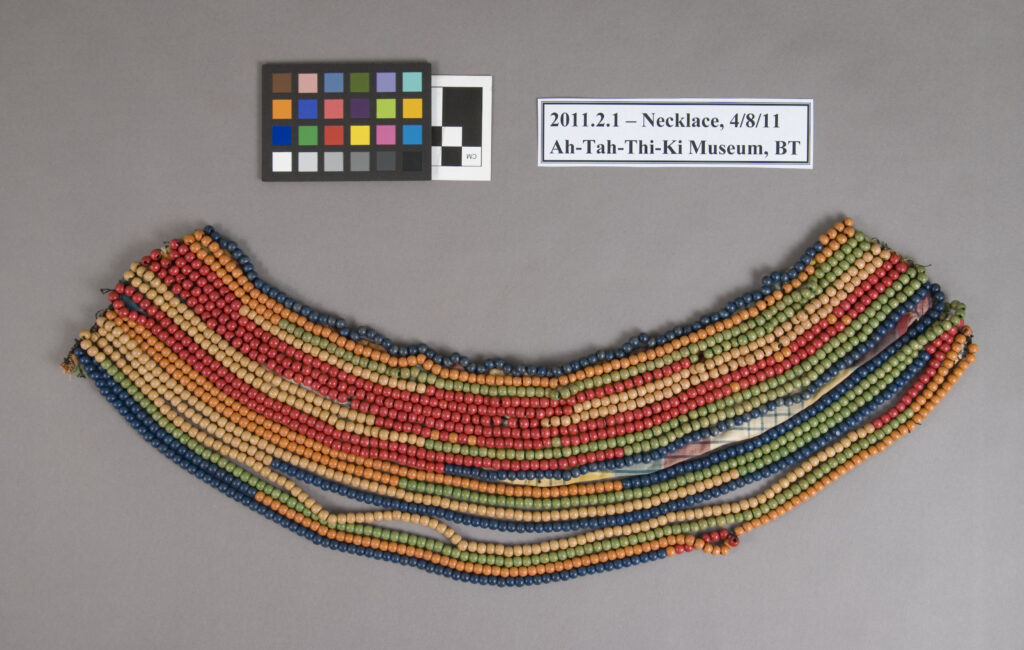
Beaded Necklace/Collar
This wooden/beaded necklace is another incredible piece of Seminole fashion. Necklaces were very popular, and women would accrue dozens of necklaces over their lifetime. They were a daily part of a Seminole woman’s routine: from putting them on in the morning to removing them at night in a basket next to her bed. Some women could wear up to 15 lbs of beads!
This object is unique in that it has multiple strands of beads woven together as one piece. That meant that the wearer could put it on in a single session, but it looked like they were wearing dozens of individual strands. There are 19 rows of wooden beads threaded on black cotton thread and secured to cotton fabric at either end. The top 11 strands are sewn onto a cotton plaid textile backing. The lower eight rows hang free but are secured to the cotton strips on either end. It dates to the early 20th century.
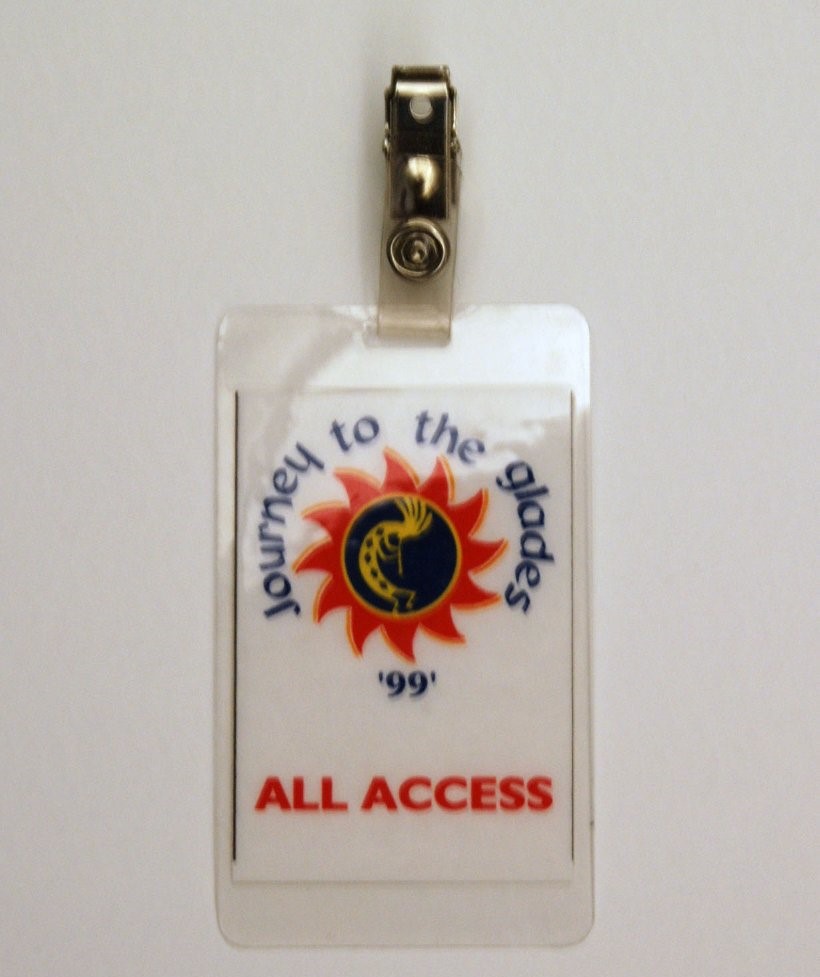
2009.3.147, ATTK Museum
All Access Pass to “Journey to the Glades”
Something special about the Ah-Tah-Thi-Ki Museum Collection is how they acquire and take care of items relating to events, both past and present. If you peruse the collection you will find a vast array of ephemera related to a variety of events, both hosted by the Museum and beyond. Above, you can see an all access pass for the 1999 “Journey to the Glades” concert. This New Years Eve Phish Concert would go on to live in history! More than 80,000 screaming fans would travel to Big Cypress for the concert, with some fans waiting 18 hours in traffic.
In 2019, Phish lead singer and founding member Trey Anastasio spoke about the show on After Midnight: Phish’s Big Cypress Festival, a five-part podcast hosted by Jesse Jarnow. “We played all night,” Anastasio said about the event. “We actually played two days, but the last set was from 11:15, or something, on New Year’s Eve, until 7 or 8 in the morning. It was incredible, and, for me, it was the greatest, the pinnacle.”
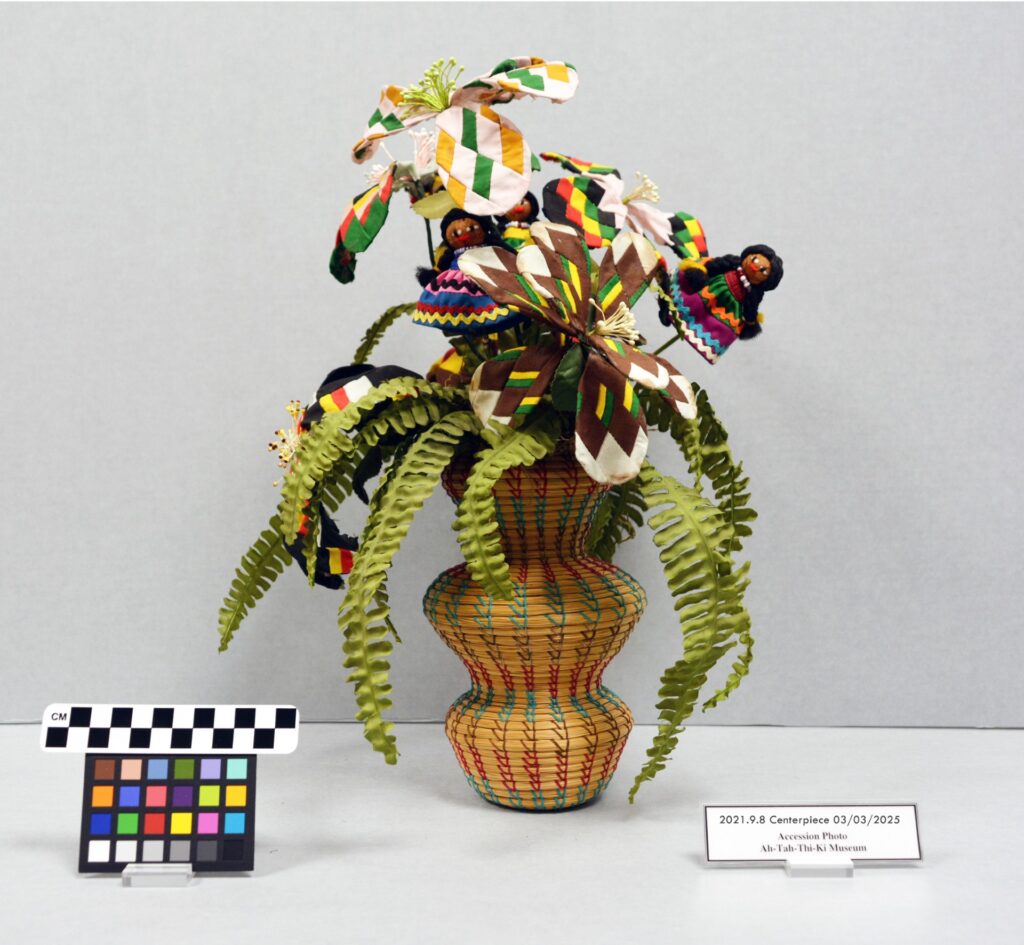
Sweetgrass Basket Centerpiece
Much like the dolls-head pincushion shown above, this sweetgrass basket is a mix of many different traditional Seminole crafting techniques. Visually stunning, the centerpiece is shaped like a double gourd vase. It is filled with six fabric patchwork flowers, three miniature female dolls, and fern leaves. Each doll is further decorated with ric rack dresses and beaded jewelry. This mixed media basket shows off a wealth of artistry: from the complex sweetgrass basket shape to the multiple decorated palmetto fiber dolls, to the crafted patchwork flowers.
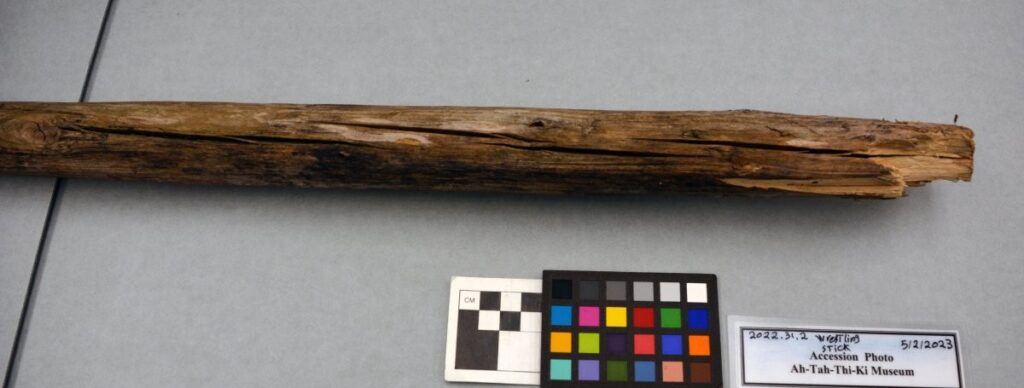
2022.31.2, ATTK Museum
Alligator Stick
This incredibly unique object comes with it a wealth of knowledge of generations of Seminole alligator handling. Used by Billy Walker, this alligator stick was stripped of bark and used during his alligator wrestling shows. Seminoles have been handling alligators for centuries, but alligator wrestling evolved as a tourist show in the early 20th century. A long-time alligator wrestler, Walker began performing at a young age to make money and teach Seminole culture at the same time. Recently, Walker announced his retirement from alligator wrestling.
He hopes that his career inspires people to hold on to their heritage. “I have pride in what I do and also tradition and culture. Our roots, … that’s everything that I put out there,” Walker said. “You know, we still here, we’re still living. If you do wander off, go check other things out, come back, get rooted every now and then. And know where you come from, because that tells a lot about who you are…And I believe if you don’t hold on to your roots, you’ll be like a tumbleweed, you’ll go away. You’re nobody,” Walker continued. “So, hold on to your roots and who you are. … That’s why I wrestle the alligator.”
Looking for more? Swing back next week for the second half of our list! Or, explore the Museum Online Collection yourself and try and guess what we will feature next.


